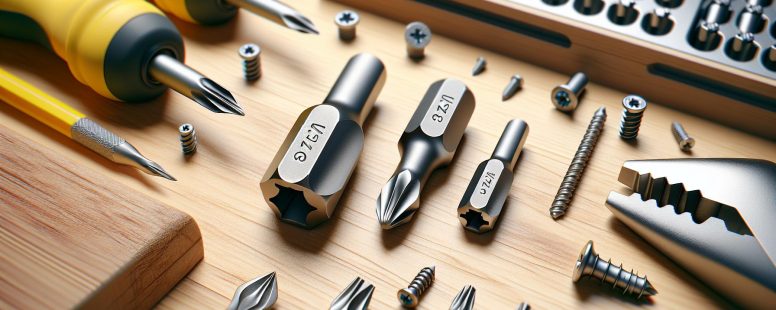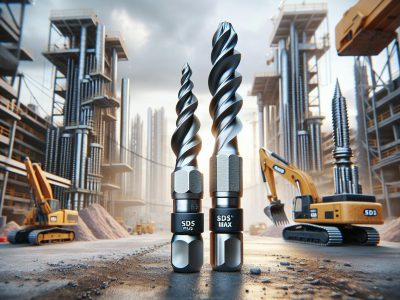Understanding the Differences: PZ2 vs PZ3 Screwdriver Bits for Your DIY Projects
Ever found yourself in a fix trying to decide between pz2 and pz3 screwdriver bits? You’re not alone. It’s an all-too-common dilemma for many DIY enthusiasts, professionals, or anyone who dabbles with tools now and then.
In the world of screws and their drivers, these two types often stir up confusion. But don’t worry! We’ll jump into this head-on to clear things up once and for all.
So buckle up as we begin on a journey exploring the differences between these two commonly used Pozidrivs – PZ2 & PZ3 – helping you make informed decisions next time you reach out for your toolbox.
Overview of Pz2 and Pz3 Screwdrivers
In your quest to understand Pozidriv screwdriver bits, let’s investigate into the specifics of both PZ2 and PZ3. Both these variants possess unique characteristics that set them apart.
Key Features of Pz2
Pozidrive 2 (PZ2) is known for its widespread use in everyday tasks. Measuring approximately 5mm across, it fits screws typically used in household appliances or light construction work. For instance, if you’re assembling furniture or mounting a TV bracket on the wall, chances are you’d be using a pz1 or pz2 screw bit. But what sets this variant apart is not just versatility but also compatibility with cross-head screws – an advantage when working with varied hardware types.
Key Features of Pz3
On the other hand,Pozidrive 3 (pz3), measures around 6mm across – slightly larger than its counterpart.With this increase in size comes strength: it’s commonly associated with heavy-duty jobs like outdoor constructions due to robustness & reliability.For example,in building decks,you’d likely require heavier duty screws hence relying more heavily on a pz4,pz5,screwbit,and possibly even beyond.But,it remains clear,the selection between these two sizes isn’t merely about personal preference,but rather hinged upon specific task requirements.
Understanding the Difference Between Pz2 and Pz3
Let’s investigate deeper into the intricacies of these two types of screwdriver bits.
Size and Fit Comparison
The physical dimensions play a crucial role in differentiating between pz2 and pz3. For instance, you’ll find that a standard PZ2 bit measures approximately 5mm. This size allows it to snugly fit cross-head screws commonly found in furniture assembly kits or TV mounting brackets. But, an average-sized PZ3 bit comes around 6mm – larger than its counterpart.
To add specificity to this data:
| Screwdriver Bit Type | Approximate Size |
|---|---|
| PZ2 | ~5 mm |
| PZ3 | ~6 mm |
This difference might seem insignificant at first glance but when dealing with precision tasks like assembling intricate hardware, even such minute differences can be decisive.
Application and Usage
As for their applications, each screwdriver type excels under certain conditions due largely to their design characteristics. The smaller sized yet versatile PZ2 makes light work out of everyday tasks like piecing together flat-pack furniture or hanging up picture frames on walls – thanks primarily to its compatibility with diverse hardware types.
On flip side stands the robustness offered by larger sized pz3s which provide added strength essential for heavy-duty jobs—think construction projects outdoors where reliability is key!
Here’s an illustrative comparison:
- Everyday Tasks: Pick up your trusty
Pz2if you’re putting together some IKEA furniture over the weekend. - Heavy-Duty Jobs: But grab hold of a
pz3when tasked with building that outdoor deck you’ve been planning all summer long!
Optimal Use of Pz2 and Pz3 in DIY Projects
The right tool selection makes all the difference when you’re tackling a project. Understanding how to optimally use your screwdriver bits, specifically the PZ2 and PZ3, is crucial.
Tips for Choosing the Right Screwdriver
Selecting an appropriate bit from between a versatile everyday tool like a 5mm PZ2 or its more robust cousin, the 6mm PZ3 isn’t rocket science if you know what each one excels at.
- Assess Your Task: Identify whether it’s routine assembly work where smaller screws are common (ideal for using a PZ2) or heavy-duty tasks involving larger screws (PZ3).
For instance,
- A flat-pack furniture build typically requires precision rather than brute force making Pz2, with its smaller size, ideal.
- Building outdoor decking? You’d want something stronger that can handle large-scale fasteners – cue in Pz3.
Remember – there’s no ‘one-size-fits-all’ solution here; task requirements dictate which bit gets top billing!
Common Mistakes to Avoid
When working on any projects requiring specific tools such as screwdrivers,
- Don’t Overlook Size Compatibility: The wrong fit doesn’t just hamper efficiency but could potentially strip both your driver bit and screw head! Always ensure correct sizing before getting down to business.
Example:
Even though minor variations exist between similar-looking Pozidrivs like our subjects today – a mere millimeter separates them! Misfitting even by this small margin leads to damaged tools/screws over time!
Conclusion
Exploring the world of screwdriver bits isn’t as complex as you might think. By now, it should be clear that PZ2 and PZ3 aren’t interchangeable – each bit has its unique applications. Remember, your go-to for everyday tasks is typically a versatile PZ2 while heavy-duty work calls for the strength of a PZ3.
Being smart about choosing between these two can make all the difference in both DIY projects and professional tasks. Keep an eye on size compatibility to avoid damaging tools or screws because even minor variations matter here! It’s not just about having any old tool; it’s about selecting precision equipment like either a trusty PZ2 or sturdy PZ3 based on what your task requires.
So next time you’re faced with this choice, don’t guess – use this knowledge to pick wisely!






